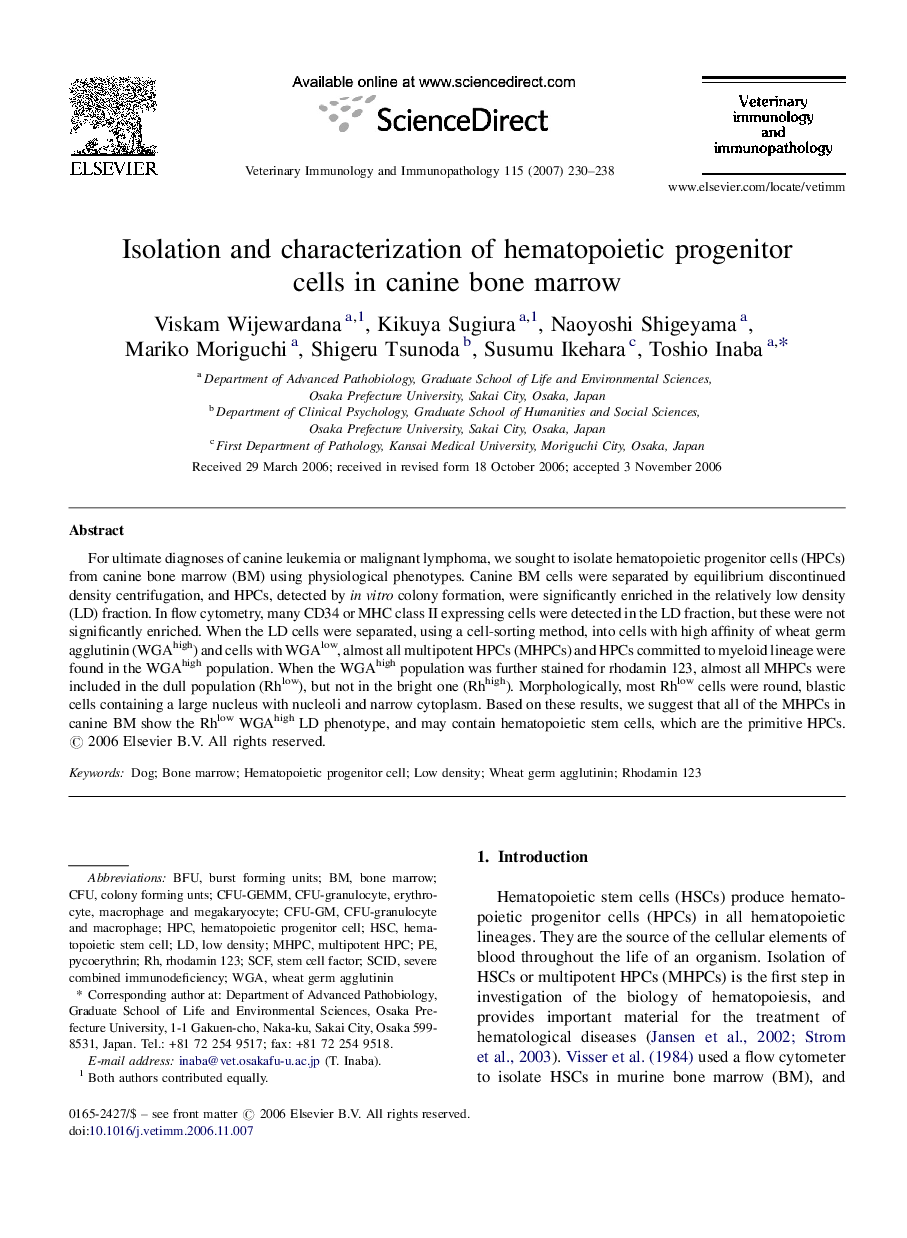| Article ID | Journal | Published Year | Pages | File Type |
|---|---|---|---|---|
| 2463311 | Veterinary Immunology and Immunopathology | 2007 | 9 Pages |
For ultimate diagnoses of canine leukemia or malignant lymphoma, we sought to isolate hematopoietic progenitor cells (HPCs) from canine bone marrow (BM) using physiological phenotypes. Canine BM cells were separated by equilibrium discontinued density centrifugation, and HPCs, detected by in vitro colony formation, were significantly enriched in the relatively low density (LD) fraction. In flow cytometry, many CD34 or MHC class II expressing cells were detected in the LD fraction, but these were not significantly enriched. When the LD cells were separated, using a cell-sorting method, into cells with high affinity of wheat germ agglutinin (WGAhigh) and cells with WGAlow, almost all multipotent HPCs (MHPCs) and HPCs committed to myeloid lineage were found in the WGAhigh population. When the WGAhigh population was further stained for rhodamin 123, almost all MHPCs were included in the dull population (Rhlow), but not in the bright one (Rhhigh). Morphologically, most Rhlow cells were round, blastic cells containing a large nucleus with nucleoli and narrow cytoplasm. Based on these results, we suggest that all of the MHPCs in canine BM show the Rhlow WGAhigh LD phenotype, and may contain hematopoietic stem cells, which are the primitive HPCs.
